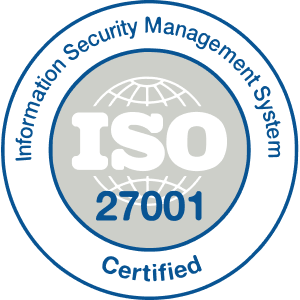With the increasing energy demands with time, other environmental issues are also increasing. Here, Energy Management System (EMS) are changing the game. According to a report by Statista, in 2022, global electricity consumption will reach about 25,300 terawatt-hours, reflecting a 20% rise over the last decade.
As the energy usage risk increases, the need for energy management is also increasing.
In this article, we will deeply analyse Energy Management System (EMS) and see how it empowers businesses and individuals, how these systems optimise costs and promote a sustainable future.
What is an Energy Management System (EMS)?
EMS stands for “Energy Management System,” a digital solution that is designed to monitor, control, and optimise energy consumption.
The Energy Management System (EMS) assures effective energy utilisation across various industries, from industrial to residential buildings, by utilising technology related to the Internet of Things (IoT), advanced analytics, and automation.
For a more straightforward explanation, it functions as the “brain” behind energy-saving methods, providing insights and recommendations that may be put into action.
Key Components of an EMS:
- Energy Monitoring Tools: They are the tools that collect energy consumption operational live data. Sensors and meters fall into this category.
- Data Analytics Platform: The software that processes the gathered data and finds patterns of their existence.
- Control Systems: The system that controls the process to optimize energy efficiency.
- User Interface: These are the dashboards where the user gets insights to make actionable and right decisions.
“The future of energy lies in how efficiently we manage it today.” |
Why is Energy Management Crucial?
It has nothing to do with merely saving money on energy consumption but actually has to do a lot to take care of our environment. So let’s move forward now and explore the importance of energy management in this world today:
Environmental Sustainability
Energy generation is the most significant source of release of greenhouse gases in the environment. Through aggressive strategies in building energy management:
- Reduction in Carbon Emissions: EMS optimises energy consumption by reducing it. This reduces energy wastage and also decreases carbon footprints. For example, energy efficient operations can reduce energy emissions by up to 15% annually in an organisation.
- Facilitation of Renewable Energy: An Energy Management System (EMS) allows us flexibility in integrating Renewable energy sources such as solar and wind into the existing energy Systems without any hassle. That way, it ensures that these intermittent energy sources are being harnessed properly.
- Long-term Conservation: Through sustainable energy practices, EMS encourages the conservation of non-renewable resources for the benefit of future generations.
Cost Efficiency
Businesses spend a significant portion of their operating budgets on energy. An EMS addresses this by:
Eliminating Waste: With its ability to ferret out inefficiencies, EMS spurs organizations to consume less energy. For example, shutting off machinery at night when production is closed helps save many thousands over the course of a year.
Optimizing Energy Tariff: A good EMS system can foster the analysis of typical patterns and recommend cost-saving energy plans or help migrate power-hungry processes outside peak tariff hours.
Maximizing Equipment Life: Predictive maintenance capabilities ensure machinery is operating at full capacity resulting in less wear and tear, and lower overall maintenance costs.
Regulatory Compliance
Governments and international bodies are tightening energy efficiency regulations Compliance with such standards is simple with EMS:
Compliance with Standards: EMS makes it easier for businesses to fit with the regulations (e.g, aligning to ISO 50001 or the Energy Efficiency Directive in EU.)
Avoid the Penalties: Failing to comply with energy regulations can cost you a lot of fines. They ensure that businesses are not doing something wrong with the law.
Energy Security and Reliability
In a world where energy demand is increasing, it becomes imperative to maintain a reliable energy supply:
Avoid Downtime: With the help of EMS, you get predictive insights to avoid unwanted energy downtime and your proceedings are not disturbed.
Efficient Resource Allocation: Through the continuous monitoring and analysis of real-time energy needs, EMS places the energy where it is most required, thereby reducing grid stress.
Enhanced Corporate Social Responsibility (CSR)
Consumers are now leaning towards more sustainable businesses :
Enhances Brand image: When a company displays its resolve toward energy efficiency it reflects the image of eco-conscious customers and investors
Sustainable practices: Employee engagement is key as sustainable practices often align with employee values and increase workplace enthusiasm and productivity.
How IoT Powers Energy Management Systems?
IoT (Internet of Things) Integration with Energy Management Systems has changed the landscape of monitoring, controlling and managing energy. IoT connects a network of devices and sensors that allows data streaming and real-time analytics & automation, all serve as the foundation required for a state-of-the-art Energy management system. Here’s a deep dive into how IoT drives the efficiency and intelligence of EMS:
Real-Time Energy Monitoring
IoT sensors are generating granular data across all sorts of points in an energy system, continuously. This gives data businesses the ability to spot inefficiencies in real-time with consumption patterns.
Example: In an industrial environment, IoT-enabled sensors mounted on it can monitor individual machine energy usage. If the energy consumption of a particular individual machine is higher than what it should be, then an EMS indicates its presence for investigation.
Impact: It helps avoid energy waste, unexpected costs, and optimizes operation efficiency due to this real-time visibility.
“IoT doesn’t just monitor energy—it transforms data into actionable intelligence.” |
Predictive Maintenance
IoT-enabled EMS can predict future equipment failures beyond just monitoring. Such systems use machine learning algorithms that analyze real-time and historical data to make patterns of wear and tear highlight as anomalies.
How It Works: These sensors track temperature, vibration, power usage, etc. If they sense abnormality, then alert about the breakdown even before occurrence.
Benefits: Predictive maintenance reduces downtimes, thereby reducing repair and replacement costs. Extends costly equipment life span
Stat Insight: Predictive maintenance has also been said to reduce maintenance costs by 25-30 percent with nearly 50 percent reduction in the unplanned time.
Remote Control and Automation
The Internet of Things can remotely control energy systems, thereby facilitating the operation from any place.
Smart buildings can serve as a better example of where IoT helps control lighting, HVAC systems, among other equipment simply by controlling with mobile applications and web dashboards.
Automation: An IoT-enabled EMS can automate many tasks associated with energy intensive tasks, such as scheduling the HVAC system to run during peak hours or turning off unused lights in an unoccupied room.
This level of control guarantees efficient use of energy without requiring frequent human intervention.
Integration with Renewable Energy Sources
This integration and optimization with renewable sources-which could also involve panels of solar, or even a wind turbine-more significantly applies at this point.
Dynamic Energy Balancing: With IoT, balancing the energy could be made because all power, generated by these renewables, plus its consumption are monitored at ideal efficiency.
Optimization of Energy Storage: The extra energy generated at peak times will be absorbed by IoT-linked battery systems and only allowed to release when necessary.
Advanced Data Analytics and AI
IoT devices generate vast amounts of data, which can be processed using artificial intelligence to uncover deep insights.
- Energy Forecasting: AI algorithms analyze consumption patterns and external factors like weather to predict energy needs.
- Custom Optimization Strategies: Tailored recommendations help businesses make data-driven decisions to reduce energy costs.
“Data collected by IoT devices is like raw energy—AI refines it into actionable power.” |
Demand Response and Grid Interaction
IoT enables EMS participation in demand response programs. They are utilized during peak demand hours, thereby supporting balancing of the grid.
How it works: Energy usage during high hours gets either reduced or rescheduled, due to the signaling done by the utility providers on this EMS system.
- Outcome: This not only lowers energy bills but also supports grid stability and sustainability efforts.
“An IoT-powered EMS doesn’t just consume energy; it communicates with the grid to create a balanced ecosystem.” |
Energy Auditing and Compliance
IoT enables real-time comprehensive energy audits with high-resolution logs and reports of energy consumption.
Regulatory Compliance: Companies will be able to offer to demonstrate compliance with regulatory requirements in relation to energy efficiency and ISO 50001.
Continuous Improvement: Insights from the IoT equipment allow continuous improvements in the energy process.
Benefits of an Energy Management System
Implementing an Energy Management System (EMS) is transformative and can provide significant benefits to businesses, industries and individuals. Let’s take a look at these results in detail:
Increase Energy Efficiency
EMS allows operators to monitor in real time where power is consumed, identify bottlenecks and optimize utilization.
Care about waste: Advanced analytics highlight where energy is wasted such as leaving equipment on when it is off-peak hours.
Customized insights: EMS uses tools and algorithms to analyze broad-based patterns and present you with operational insights for improving efficiency. A manufacturing area can cut its energy use by as much as 15% simply by optimizing machine scheduling, for instance.
As a result, this allows for accurate and effective allocation of resources to important tasks, without the system being overloaded.
Significant Cost Savings
Energy bills constitute one of the highest operational expenditure lines, and EMS helps reduce that directly by optimising energy use.
- Lower operational costs: The automated consumption process during off-peak hours saves on energy prices.
- Maintenance Cost Savings: Predictive maintenance prevents unwanted breakdowns, which saves the repair cost.
- Long-term Return on Investment: Most business enterprises recover the investment in EMS within a period of 2-3 years through savings in terms of energy.
Improved Operational Performance
EMS provides seamless operation and reduces downtime with the inclusion of IoT and advanced monitoring.
- Enhanced Reliability: Real-time monitoring does not allow any surprise power outage, and energy is delivered uninterruptedly in the system.
- Improved Productivity: Seamless delivery of energy ensures that the workflow is never interrupted, which enhances productivity totally.
- Increased Equipment Life: Predictive analytics keeps the machines at an optimal working level so that wear and tear are reduced to increase the life of the equipment.
Sustainability Goals Alignment
Sustainability is not an option, but a responsibility for the organization. Furthermore, EMS has given organizations an opportunity to keep up with worldwide sustainability goals.
- Decreased carbon footprint: Less wastage with EMS means fewer emissions by companies resulting in greener operations.
- Adding Renewable Energy Source: Furthermore, EMS allows easier integration of solar panels and wind turbines in any organization, ensuring that no power goes unutilized.
- Certifications and Recognition: In general, Energy-efficient businesses usually are eligible for ISO 50001 certifications to build brand equity.
Scalability and Adaptability
Whether it is one location or many, EMS can be expanded to address increasing energy requirements.
- Elastic Architecture: Modern EMS platforms adapt to changes in operational requirements and are therefore future-proof.
- Multi Site Management: With EMS, geographically dispersed sites can be centrally managed with the same quality energy.
- Customized Solution: The system can be designed accordingly, depending upon the type of industry, which could either be manufacturing, retail, or renewable.
Regulatory Compliance and Risk Mitigation
The government’s bringing in regulations relating to energy efficiency leaves businesses no choice but to comply.
- Easy Compliance: EMS provides all data and reports needed to comply with regulations such as the European Union’s Energy Efficiency Directive.
- No Penalties: In addition, proactive compliance reduces the chance of fines that could potentially disrupt the business.
- Audit Ready: Full documentation and monitoring make regulatory audits and inspections a breeze.
Corporate Social Responsibility (CSR) Advantage
An EMS presents companies as responsible leaders in terms of sustainability, therefore increasing brand value and stakeholder trust.
- Customer Attraction: Eco-conscious consumers are attracted to brands that ensure energy efficiency.
- Investor Confidence: Moreover, a demonstration of commitment to sustainability often attracts Environmental, Social, and Governance (ESG-sensitive) investors.
Conclusion
Energy Monitoring System is more than a system; it is the first step toward sustainability and energy efficiency. Optimizing energy consumption, cutting costs, and protecting the environment are empowered through EMS so that every business unit or individual can make decisions that are beneficial to their businesses and the earth.
Advanced systems like EMS are no longer optional but indispensable as energy demand is increasing worldwide and sustainability is becoming mainstream.






